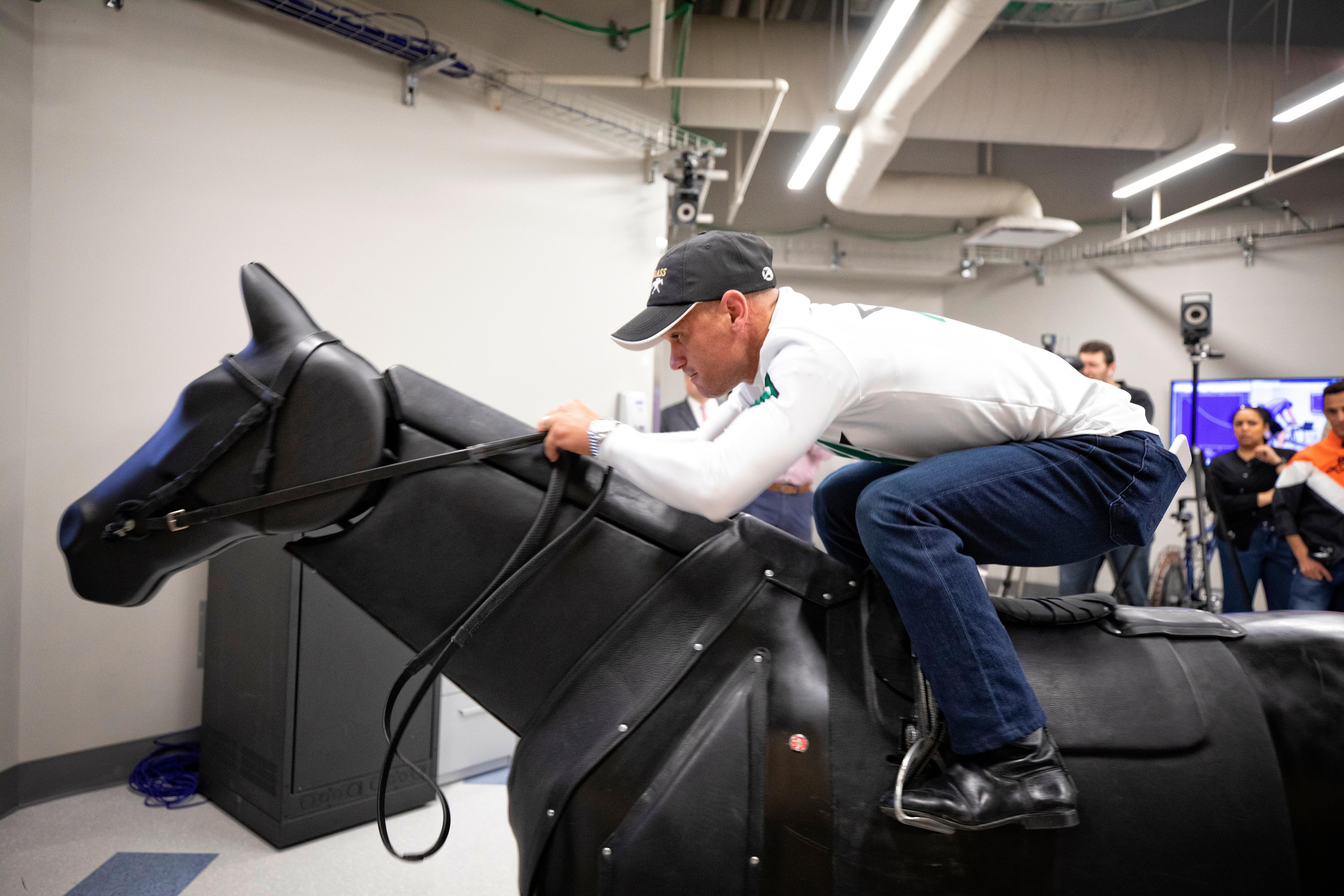UK Researchers Address Equestrian Athlete Health and Wellness Amid COVID-19 Reentry
Jockey & Equestrian Initiative expands to Equestrian Athlete (EqA) Initiative
The Sports Medicine Research Institute (SMRI) housed in the University of Kentucky College of Health Sciences has one of its four main initiatives focusing on the health and wellness of equestrian athletes. Core to the SMRI’s mission is a multidisciplinary approach to research, strong community collaborations and providing direct service to the Commonwealth.
 In response to a community engaged research process, the initiative formerly known as the Jockey & Equestrian Initiative, has recently expanded to the Equestrian Athlete (EqA) Initiative. Under this expansion, jockey health remains a priority, but defining “equestrian athlete” is more encompassing than some might first think.
In response to a community engaged research process, the initiative formerly known as the Jockey & Equestrian Initiative, has recently expanded to the Equestrian Athlete (EqA) Initiative. Under this expansion, jockey health remains a priority, but defining “equestrian athlete” is more encompassing than some might first think.
What is an equestrian athlete?
Many individuals work broadly in the equine industry as riders, workers and/or recreational enthusiasts. Equestrian athletes are individuals who interact with horses as their teammate, as their friend or as their client. This means the initiative is not only interested in those riding or driving horses at any level and in any discipline, but is also focusing on those taking care of both the horses and the riders. Horses are often partners in ensuring human health, such as in equine-assisted learning, therapeutic riding and occupational therapy activities.
“With this expansion, we can serve the equestrian community in Kentucky and throughout the country,” said Kimberly Tumlin, PhD, MS, MPH, EqA director and assistant professor in UK’s College of Public Health.
The mission of the EqA is to optimize the health, wellness and performance for the equestrian athlete through research. This research will support evidence-based outreach that is specific to equestrian populations.
It is still not clear what physical, social or psychological factors may impact health and wellness of equestrians, particularly at the community level. We consider equestrians in professional and recreational groups, and need to better define the risks and benefits of engaging with horses on human wellness.
Consider that professional equestrians represent a large population of workers with non-standard work arrangements. These individuals are occupationally classified as non-standard workers with contingent, independent contractor, and/or workers assigned to non-traditional 8 a.m. - 5 p.m. workdays. For example, professional jockeys, competitive eventing riders or horse trainers have unique work demands based within equestrian athletics. With unpredictable work schedules, occupational equestrian athletes’ work is often temporary, with instability due to factors beyond the workers’ control, and often these riders have a lack of legal protections and worker benefits. These riding athletes travel on a regular basis and have additional stress of being under high pressure of competition, which defines ability to secure future work. Lifestyle characteristics could be detrimental to worker health for various demographic groups. Non-riders also have non-standard work arrangements, particularly in the breeding industry that is so important to the Kentucky economy.
In defining these different roles that equestrians play in the industry, Tumlin and research coordinator Michaela Keener, MS, research administrative coordinator, Equestrian Athlete Initiative, picked up the reins to define EqA’s direction under the support of the SMRI.
“We are truly excited to be able to bring this level of research to the equestrian community with the vision to improve the health and safety of equestrian athletes,” said Nick Heebner, PhD, ATC, director of research, SMRI.
Laboratory focusing on health and wellness of jockeys
With the expansion of the initiative to encompass all equestrian athletes, the lab is still working with Keeneland, the Jockey’s Guild and the local Thoroughbred community to continue to focus on the health and wellness of jockeys, exercise riders and novice riders who aspire to be jockeys or exercise riders.
A main feature in the laboratory is the MK Racewood Race Horse Simulator; nicknamed Charlie Horse. Charlie Horse has a remote control mode, as well as a reactive, rider-controlled mode. This allows race riders and other galloping disciplines to ride a horse anywhere from speeds simulated to be 25-40 mph.
“This specific racing simulator is the first in the country to our knowledge, and allows us to capture differences in positions between speeds,” Keener said. “Using our motion capture system, we can determine if a rider is favoring certain joints they may have previously injured while riding and haven’t fully recovered from.”
Elite jockey Sophie Doyle, who participated in performance testing at the lab, believes Charlie Horse and the lab have something new to offer to the community.
“Whether it is establishing a baseline of performance to understand where you are today, or if you are recovering from an injury and want to be able to test how you are recovering, the data they collect will provide insight which we have never had riding in America,” Doyle said.
Like much of the country, human subjects’ research in the SMRI is delayed while we practice social distancing. With both Keeneland’s Spring Meet and the Land Rover Three Day Event among some of the top spring highlights in the Lexington community canceled, and countless shows, clinics and camps canceled or postponed, the EqA team has turned to community members to discuss COVID-19’s impact on the equestrian community. The community feedback was most concerned with social, behavioral and economic impacts of COVID19 on their equestrian participation.
Kimberly I. Tumlin, PhD, MS, MPH, director of the Equestrian Athlete Initiative and assistant professor within the UK College of Public Health, in conjunction with Michaela Keener, MS, research coordinator within the UK SMRI, College of Health Sciences, provided this information.
